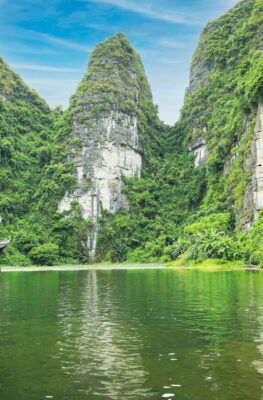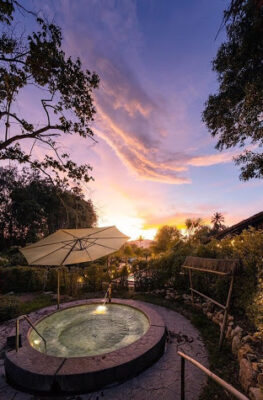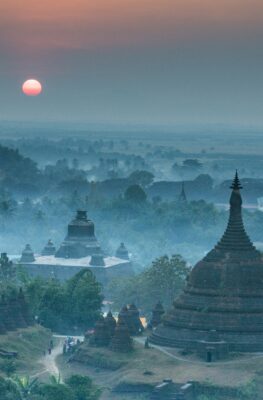Published on December 19, 2017
Most rivers in the world pale before the majesty and power of the Mekong River. Its 4,900-km length crosses the borders of six countries in Asia; its waters have shaped Southeast Asia’s history and culture for thousands of years.
You’ll find real life along the banks of the Mekong: gorgeous temples, mysterious caves, and serene cities can all be seen by travelers cruising down the river’s length. That’s why we’ve come up with this four-country itinerary that proceeds down the length of the Mekong in Southeast Asia, beginning in Thailand and ending where the Mekong empties into the South China Sea from Vietnam.
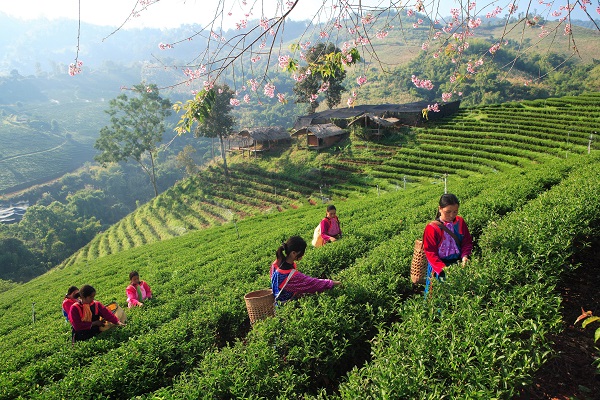
Chiang Rai, Thailand
Hemmed in by mountains to the west and the Kok River (a tributary of the Mekong) to the north, the Thai city of Chiang Rai makes an ideal jump-off point for travelers going downstream of the mighty river – but travelers should still spend a few days taking in this provincial metropolis’ sights.
Modern Thai artists have populated Chiang Rai with kitschy, visually compelling temples, among them the Baan Dam “Black House” filled with experimental taxidermy; the dazzlingly-white Wat Rong Khun, and the playfully colorful Wat Huay Sai Khao.
After enjoying the night bazaar and day trips to the former Lanna capital of Chiang Saen on the Mekong or the Yunnanese mountain town of Mae Salong, board a shuttle to the Laos border crossing at Chiang Khong/Huay Xai, a favorite launchpad for slow boats heading to the former capital of Luang Prabang, our next stop.
For a glimpse at a cruise option that follows this route, read this 14-day itinerary through Laos, Viet Nam, and Cambodia spent mostly on board a luxurious boutique cruise ship along the Mekong River.
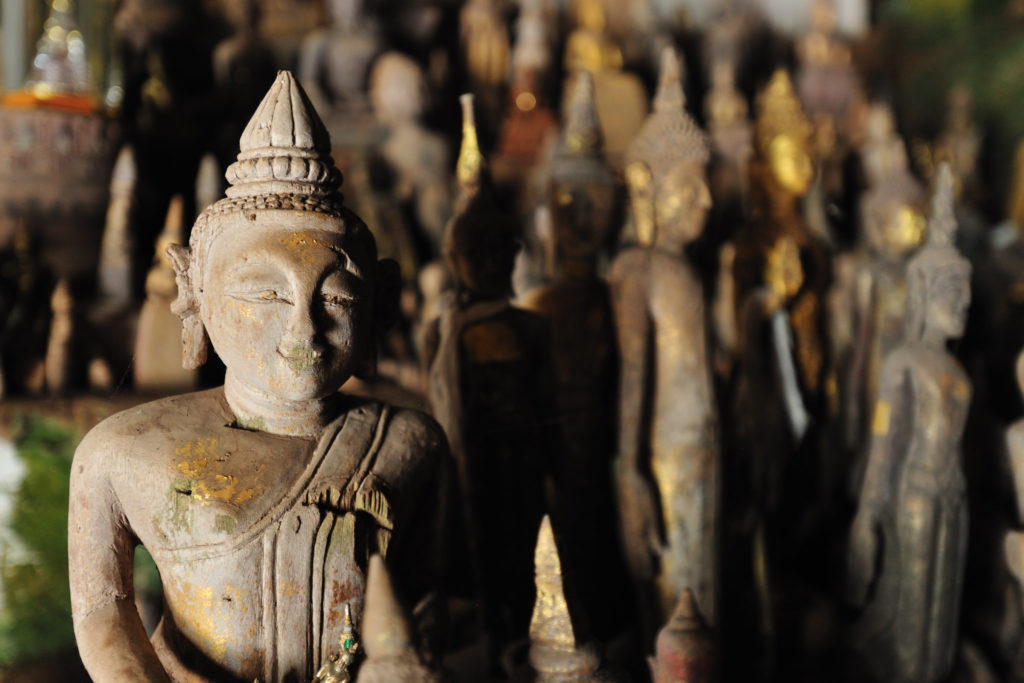
Luang Prabang, Laos
Luang Prabang would be nothing without the Mekong. The former Royal Palace, now Laos’ National Museum, is situated on the Mekong’s banks, all the better for the king to arrive and depart in state aboard the Royal Barge.
The city’s sights and activities still recall Luang Prabang’s heyday as the seat of royalty – Wat Xiengthong, a 450-year-old temple, retains a graceful gilded beauty borne from its origins as a state pagoda; and monks still receive alms from devotees along the town’s streets, in the graceful ritual called tak bat.
From Luang Prabang, you can cruise to riverside craft villages that make rice wine and paper in the traditional manner; and to Pak Ou to visit the sacred caves of Tham Ting and Tham Phum, where hundreds of Buddha Statues attest to centuries of local faith.
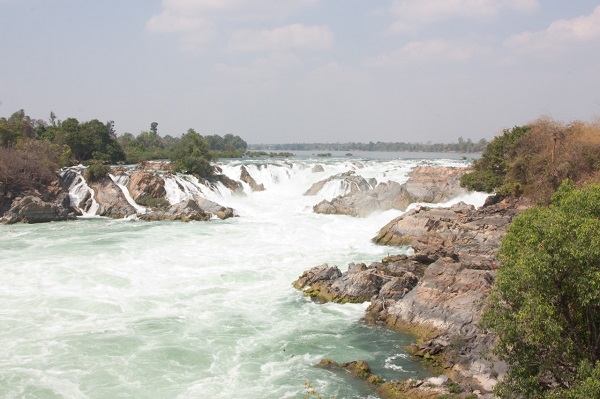
Si Phan Don, Laos
The stretch from Luang Prabang to Si Phan Don is too long to conveniently traverse; to get to your next stop, fly from Luang Prabang to Pakse, then take a bus to Si Phan Don.
A landlocked nation is hardly the first thing that comes to mind when you mention “four thousand islands”, but Laos is hardly the norm! Si Phan Don, an archipelago of islands in Southern Laos, has long been a backpacker favorite, its laid-back island towns providing a surfeit of authentic Lao country experiences.
Book a night’s stay or so at the bigger islands of Si Phan Don – Don Khong, Don Dhet and Don Khone have a fair complement of backpacker hostels and lodges for you to choose from – and visit the rampaging Khone Phapheng Waterfalls on the Mekong before you head out to Cambodia.
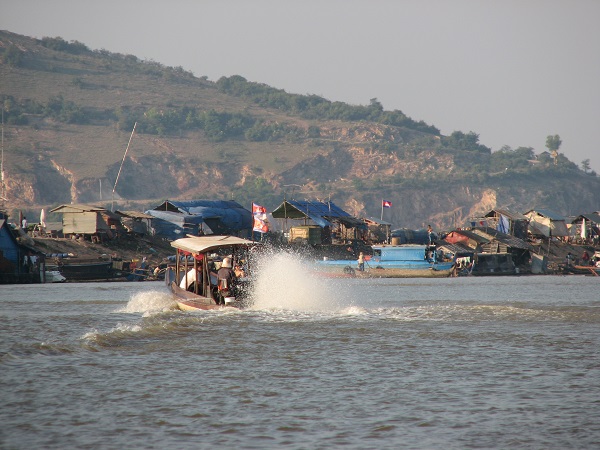
Siem Reap & Tonle Sap, Cambodia
The Cambodia city of Siem Reap is a six-hour bus ride and a single border crossing from Si Phan Don.
The Angkorian temples near Siem Reap betray the area’s past as the capital of a once-mighty empire. You could stay here for weeks exploring all of the known Angkor temples, but you can just set aside a day to see the Angkorian highlight reel: the overgrown Ta Prohm; the sprawling Angkor Thom; the hilltop Phnom Bakheng; the multi-faced Bayon Temple; and the stupendously majestic Angkor Wat.
Siem Reap’s Phnom Krom pier lets you board passenger boats headed to Cambodia’s largest lake, Tonle Sap, or as far as Ho Chi Minh City in Vietnam. Find out more here: From Lake to Delta Down the Mekong.
At Tonle Sap, you’ll get the chance to explore the local waterborne communities: from the floating village of Chnok Tru to the beautiful mural work of Wat Kampong Tralach Leu pagoda in Kampong Tralach.
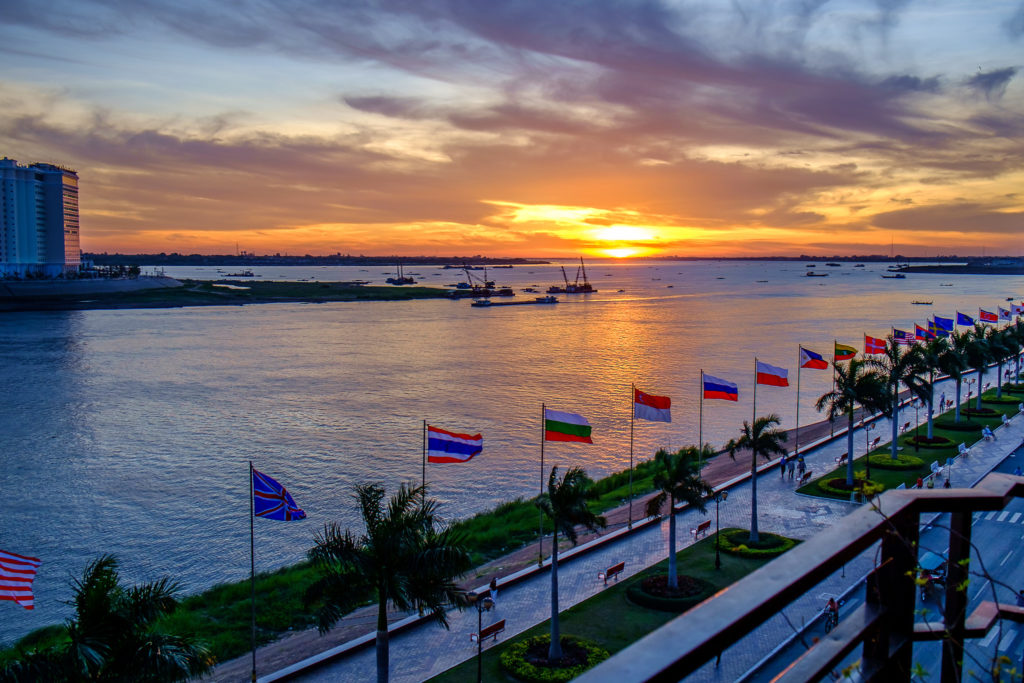
Phnom Penh, Cambodia
The swiftly-evolving city of Phnom Penh skillfully balances the past and future, with temples and one grand palace within sight of the river promenade.
The Silver Pagoda in the Royal Palace tells the story of Phnom Penh’s royal past – fill in the rest of the story with visits to the National Museum, Wat Phnom temple (the oldest part of the city), and the somer Toul Sleng.
After shopping for souvenirs at the Central Market, finish your day watching the sunset from the quayside, before retiring for dinner at one of Sisowath Quay’s many restaurants.
Ho Chi Minh City, Vietnam
As you cross the border from Cambodia to Vietnam, you’ll realize you’re at the home stretch: the southern city of Ho Chi Minh City is a gateway to the Mekong River Delta, where the river waters finally meet the South China Sea.
Take a walk to “Saigon”’s historical sites, among them the War Remnants Museum; City Hall; the Reunification Palace; the Notre Dame Cathedral and the Post Office next door; before riding out to the Cu Chi Tunnels and the Cao Dai Holy See outside the city limits.
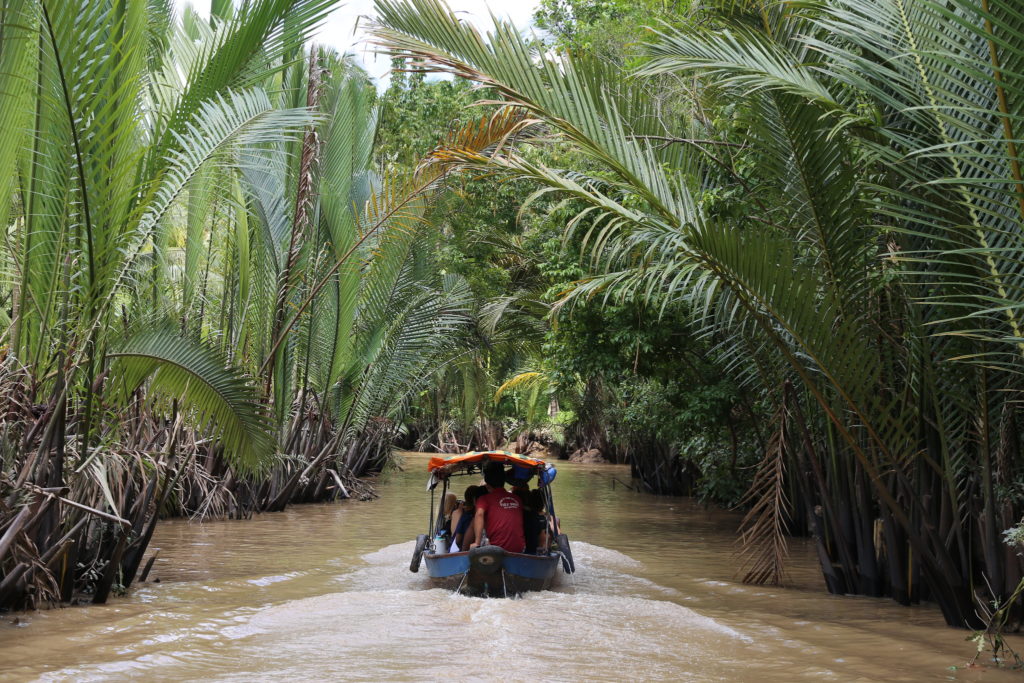
Mekong Delta, Cambodia
The rich farmlands of the Mekong Delta provide rice to most of Vietnam, but it also provides an invaluable look at rural and riverside life just before the river meets the sea.
River travelers can explore multiple stops along the sprawling delta, and get a different experience at each stop. Start at My Tho, famous for its floating markets, and iconic Vinh Trang pagoda, before heading into villages including (but not limited to) Cai Be, a charming little town known for its floating market, bonsai gardens, fruit orchards, and French Gothic Cathedral; Sa Dec, a charming colonial town full of villas and vibrant flower markets; and Can Tho, the Mekong Delta’s largest city and cultural hotspot.
For luxury cruises that cover the Mekong Delta area in detail, check out this eight-day trip that spans Cambodia and Vietnam, or this eight-day itinerary that spans the distance from Ho Chi Minh City in Vietnam to Siem Reap in Cambodia.



